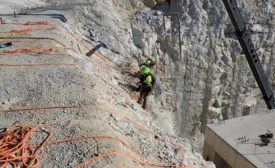Home » Keywords: » water/environment
Items Tagged with 'water/environment'
ARTICLES
2023 ENR Texas & Louisiana Best Projects
Best Water/Environment — Village Creek Facility Biosolids
December 11, 2023
2023 ENR Northwest Best Projects
Best Project, Water/Environment, Award of Merit, Safety: I-5 & SR 11, Padden Creek Fish Passage Design Build Project
December 11, 2023
ENR Mountain States 2023 Best Projects
Award of Merit Water/Environment: Logan Regional WW Treatment
November 27, 2023
ENR Mountain States 2023 Best Projects
Best Project Water/Environment: Steinaker Service Canal
November 27, 2023
ENR Mountain States 2023 Best Projects
Award of Merit Water/Environment: Willow Creek Campus
November 27, 2023
ENR Mountain States 2023 Best Projects
Best Project Water/Environment: Chemical Phosphorous Removal
November 27, 2023
ENR 2023 New York Best Projects
Best Project Water/Environment: Watergate Wetlands Restoration Project
November 13, 2023
ENR Midwest Best Projects 2023
Award of Merit, Water/Environment: Euclid Water Pollution Control Center Improvements
November 13, 2023
The latest news and information
#1 Source for Construction News, Data, Rankings, Analysis, and Commentary
JOIN ENR UNLIMITEDCopyright ©2024. All Rights Reserved BNP Media.
Design, CMS, Hosting & Web Development :: ePublishing











